-
 Bitcoin
Bitcoin $101,898.5005
-0.75% -
 Ethereum
Ethereum $2,258.1125
-1.07% -
 Tether USDt
Tether USDt $1.0004
0.01% -
 XRP
XRP $2.0178
-2.93% -
 BNB
BNB $624.0243
-1.53% -
 Solana
Solana $134.3298
-0.90% -
 USDC
USDC $0.9999
0.01% -
 TRON
TRON $0.2675
-2.05% -
 Dogecoin
Dogecoin $0.1538
-1.96% -
 Cardano
Cardano $0.5482
-1.11% -
 Hyperliquid
Hyperliquid $35.5636
5.45% -
 Bitcoin Cash
Bitcoin Cash $453.4902
-1.66% -
 Sui
Sui $2.5134
-2.97% -
 UNUS SED LEO
UNUS SED LEO $9.1292
1.77% -
 Chainlink
Chainlink $11.8457
-1.60% -
 Stellar
Stellar $0.2312
-2.73% -
 Avalanche
Avalanche $16.9721
0.29% -
 Toncoin
Toncoin $2.7549
-3.82% -
 Shiba Inu
Shiba Inu $0.0...01081
-1.10% -
 Litecoin
Litecoin $80.8250
-0.71% -
 Hedera
Hedera $0.1374
0.21% -
 Monero
Monero $305.4827
-2.36% -
 Ethena USDe
Ethena USDe $1.0006
0.00% -
 Dai
Dai $1.0000
-0.01% -
 Polkadot
Polkadot $3.2085
-3.12% -
 Bitget Token
Bitget Token $4.0845
-3.13% -
 Uniswap
Uniswap $6.3353
-1.63% -
 Pi
Pi $0.5085
-0.70% -
 Pepe
Pepe $0.0...08913
-3.82% -
 Aave
Aave $232.7090
-0.58%
How do I set WMA parameters? What are the tips for cycle selection?
WMA helps traders identify trends in volatile crypto markets; setting parameters and choosing cycles are key to a successful strategy.
May 24, 2025 at 08:08 am
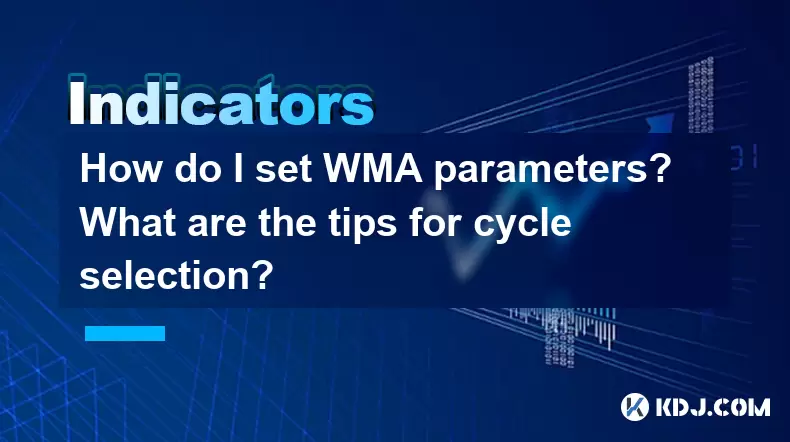
Setting up WMA (Weighted Moving Average) parameters and selecting the right cycle for trading in the cryptocurrency market can be crucial for developing an effective trading strategy. This article will guide you through the process of setting WMA parameters, provide tips on cycle selection, and offer insights into how these can be applied in the context of cryptocurrency trading.
Understanding WMA and Its Importance in Cryptocurrency Trading
WMA, or Weighted Moving Average, is a type of moving average that assigns a higher weighting to more recent price data. This makes it more responsive to new information compared to a Simple Moving Average (SMA). In the world of cryptocurrency, where price volatility is high, using a WMA can help traders identify trends more quickly.
The primary advantage of using WMA in cryptocurrency trading is its ability to filter out short-term fluctuations and highlight longer-term trends. This can be particularly useful in a market that experiences frequent price swings. By understanding how to set WMA parameters correctly, traders can enhance their ability to make informed decisions.
Setting WMA Parameters
Setting the parameters for WMA involves choosing the period length and understanding how weights are assigned to different data points. Here's how you can set WMA parameters:
Choose the Period Length: The period length determines how many data points are used to calculate the WMA. Shorter periods are more sensitive to recent price changes, while longer periods provide a smoother trend line. For cryptocurrency trading, common period lengths range from 10 to 50 days, depending on the trader's strategy.
Assign Weights: In a WMA, the most recent data point is given the highest weight, and each subsequent data point's weight decreases linearly. The formula for calculating WMA is:
[
WMA = \frac{n \times Pn + (n-1) \times P{n-1} + ... + 2 \times P_2 + 1 \times P_1}{n + (n-1) + ... + 2 + 1}
]Where ( n ) is the period length, and ( P_n ) is the price at period ( n ).
Implement in Trading Platform: Most trading platforms and charting software allow you to easily set up a WMA. Navigate to the indicators section, select WMA, and input your chosen period length. The platform will then apply the weights automatically.
Tips for Cycle Selection in Cryptocurrency Trading
Selecting the right cycle for trading is essential for maximizing profits and minimizing risks. Here are some tips to help you make informed decisions:
Analyze Historical Data: Before selecting a cycle, analyze historical price data of the cryptocurrency you are interested in. Look for patterns and cycles that have historically led to profitable trades.
Understand Market Sentiment: Cryptocurrency markets are heavily influenced by sentiment. Use tools like social media analysis, news feeds, and sentiment indicators to gauge the current mood of the market.
Consider Volatility: Different cryptocurrencies exhibit varying levels of volatility. Choose a cycle that aligns with the volatility of the asset you are trading. For highly volatile assets, shorter cycles might be more effective, while less volatile assets might benefit from longer cycles.
Test Different Cycles: Use backtesting tools to test different cycle lengths and see which one performs best with your chosen WMA parameters. This can help you refine your strategy before risking real capital.
Applying WMA and Cycle Selection in Cryptocurrency Trading
Once you have set your WMA parameters and selected your trading cycle, you can apply these tools to your trading strategy. Here's how you can do it:
Identify Trends: Use the WMA to identify the overall trend of the cryptocurrency. If the price is consistently above the WMA, it indicates an uptrend, while a price below the WMA suggests a downtrend.
Enter and Exit Trades: Based on the cycle you have selected, enter trades when the price crosses the WMA in the direction of the trend. For example, if you are using a 20-day cycle and the price crosses above the 20-day WMA, it might be a good time to enter a long position.
Monitor and Adjust: Continuously monitor your trades and be ready to adjust your WMA parameters and cycle length as market conditions change. Flexibility is key in the dynamic cryptocurrency market.
Using WMA and Cycle Selection with Different Cryptocurrencies
Different cryptocurrencies may require different WMA settings and cycle lengths due to their unique market behaviors. Here are some examples:
Bitcoin (BTC): As the most established cryptocurrency, Bitcoin tends to have less volatility compared to newer altcoins. A longer WMA period, such as 50 days, and a longer trading cycle might be more suitable for Bitcoin.
Ethereum (ETH): Ethereum often experiences more volatility than Bitcoin but less than newer altcoins. A medium WMA period, such as 20 days, and a medium trading cycle could be effective for Ethereum.
Altcoins: Newer altcoins can be extremely volatile. A shorter WMA period, such as 10 days, and a short trading cycle might be more appropriate for these assets.
Practical Example of Setting WMA Parameters and Cycle Selection
Let's walk through a practical example of setting WMA parameters and selecting a cycle for trading Bitcoin:
Step 1: Choose the Period Length: Decide on a 20-day period for the WMA. This period is long enough to smooth out short-term fluctuations but short enough to be responsive to new trends.
Step 2: Set Up WMA on Trading Platform: Open your trading platform, navigate to the indicators section, select WMA, and input 20 as the period length.
Step 3: Analyze Historical Data: Use historical price data of Bitcoin to identify patterns and cycles. You notice that Bitcoin often moves in 30-day cycles.
Step 4: Test Different Cycles: Use backtesting tools to test the 30-day cycle with the 20-day WMA. You find that this combination has historically been profitable.
Step 5: Apply to Trading: Monitor Bitcoin's price in relation to the 20-day WMA. When the price crosses above the WMA during a new 30-day cycle, consider entering a long position. Conversely, when the price crosses below the WMA at the end of a cycle, consider exiting or entering a short position.
Frequently Asked Questions
Q1: Can WMA be used effectively with other technical indicators?
Yes, WMA can be used in conjunction with other technical indicators such as the Relative Strength Index (RSI) or Moving Average Convergence Divergence (MACD) to enhance your trading strategy. For example, you might use WMA to identify the trend and RSI to confirm overbought or oversold conditions.
Q2: How often should I adjust my WMA parameters and cycle length?
It's important to periodically review and adjust your WMA parameters and cycle length, especially when market conditions change significantly. A good practice is to reassess your settings every few months or after major market events.
Q3: Is WMA more suitable for long-term or short-term trading?
WMA can be used for both long-term and short-term trading. The key is to adjust the period length and cycle accordingly. Shorter periods and cycles are more suitable for short-term trading, while longer periods and cycles are better for long-term trading.
Q4: Can WMA be used for all cryptocurrencies, or are there exceptions?
WMA can be applied to most cryptocurrencies, but its effectiveness can vary depending on the asset's volatility and market behavior. For extremely low-volume or new cryptocurrencies, other indicators might be more reliable due to less reliable data.
Disclaimer:info@kdj.com
The information provided is not trading advice. kdj.com does not assume any responsibility for any investments made based on the information provided in this article. Cryptocurrencies are highly volatile and it is highly recommended that you invest with caution after thorough research!
If you believe that the content used on this website infringes your copyright, please contact us immediately (info@kdj.com) and we will delete it promptly.
- Bitcoin Price Wobbles: Crash Watch and Key Support Levels
- 2025-06-23 16:25:12
- Navigating the Crypto Seas: Charting a Course Through Bull Runs and Bear Markets
- 2025-06-23 16:25:12
- BNB Price Check: Stablecoin Surge vs. Prediction Rollercoaster
- 2025-06-23 14:25:12
- Metaplanet's Bitcoin Bonanza: Holdings Skyrocket Amidst Market Swings
- 2025-06-23 14:25:12
- Global Meltdown, Investors, and Safe Havens: Navigating the Storm
- 2025-06-23 14:30:12
- NFT Sales Snapshot: Guild of Heroes, Polygon, and the Market's Shifting Sands
- 2025-06-23 15:25:12
Related knowledge

How much volume is required for the W-bottom to break through the neckline of the time-sharing chart?
Jun 23,2025 at 04:21pm
Understanding the W-Bottom Pattern in Cryptocurrency TradingThe W-bottom pattern is a popular technical analysis formation used by traders to identify potential bullish reversals. It typically appears at the end of a downtrend and resembles the letter 'W' on price charts. In the context of cryptocurrency trading, where volatility is high and trends shif...

How to read the sideways consolidation after the bottom volume and long positive line?
Jun 23,2025 at 02:28pm
Understanding the Sideways ConsolidationWhen analyzing cryptocurrency charts, sidewards consolidation refers to a phase where prices move within a narrow range without a clear upward or downward trend. This pattern often appears after significant price movements, such as a sharp increase followed by a period of equilibrium between buyers and sellers. In...
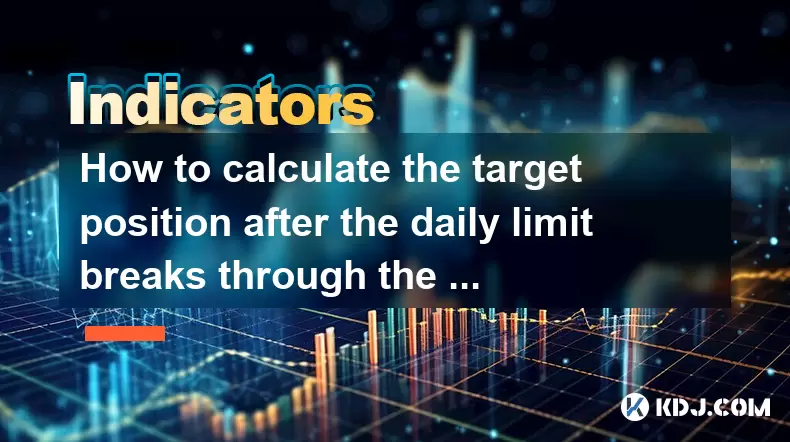
How to calculate the target position after the daily limit breaks through the previous high?
Jun 23,2025 at 02:57pm
Understanding the Daily Limit BreakthroughIn cryptocurrency trading, a daily limit typically refers to the maximum price movement allowed within a single trading day on certain exchanges. When this limit is breached, especially when it surpasses the previous high, traders often seek to calculate the target position or expected price movement following s...
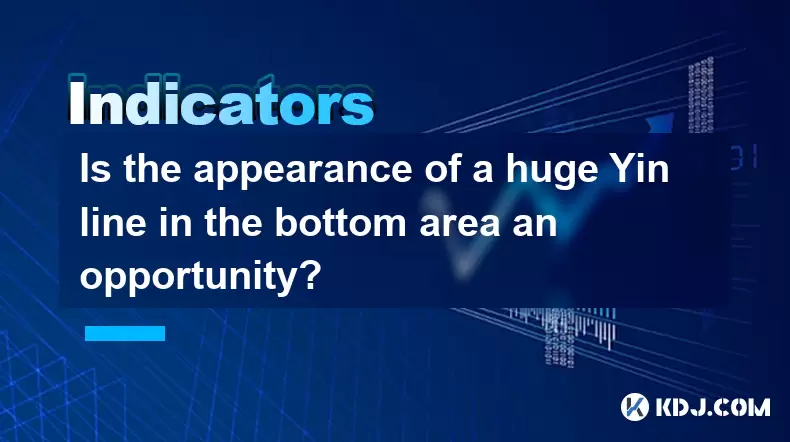
Is the appearance of a huge Yin line in the bottom area an opportunity?
Jun 23,2025 at 04:07pm
Understanding the Meaning of a Huge Yin LineIn technical analysis within the cryptocurrency market, a huge Yin line is often interpreted as a strong bearish signal. It indicates that sellers have dominated the market over a specific period, pushing prices significantly downward. When this occurs in what appears to be a bottom area, traders might questio...
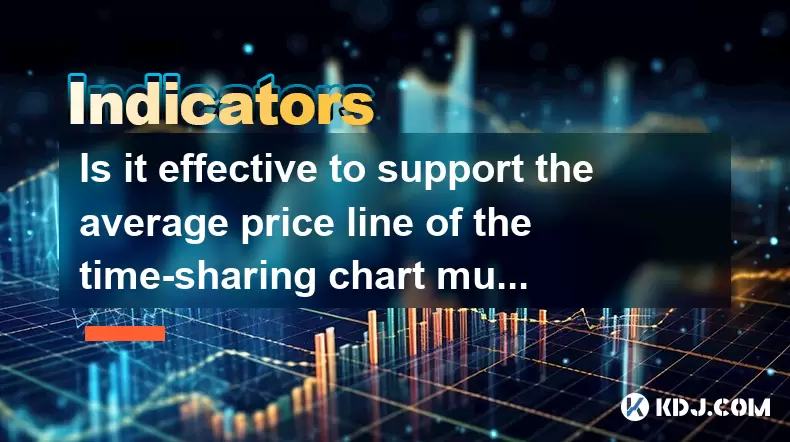
Is it effective to support the average price line of the time-sharing chart multiple times?
Jun 23,2025 at 01:36pm
Understanding the Average Price Line in Time-Sharing ChartsIn cryptocurrency trading, time-sharing charts refer to real-time price charts that display price movements over short intervals, often within a single trading day. Within these charts, the average price line, also known as the Volume Weighted Average Price (VWAP), is a commonly used technical i...
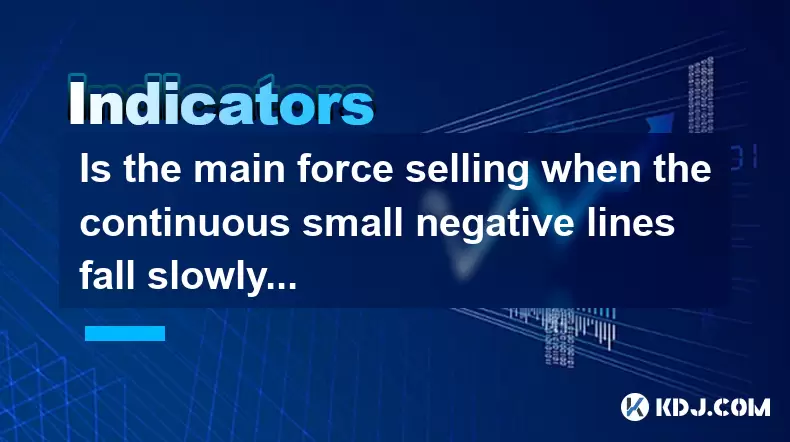
Is the main force selling when the continuous small negative lines fall slowly?
Jun 23,2025 at 03:35pm
Understanding Continuous Small Negative Lines in Cryptocurrency ChartsIn cryptocurrency trading, continuous small negative lines refer to a pattern where the price of an asset declines gradually over time with small bearish candlesticks. These candlesticks typically have short bodies and may or may not have wicks. This pattern often appears during perio...

How much volume is required for the W-bottom to break through the neckline of the time-sharing chart?
Jun 23,2025 at 04:21pm
Understanding the W-Bottom Pattern in Cryptocurrency TradingThe W-bottom pattern is a popular technical analysis formation used by traders to identify potential bullish reversals. It typically appears at the end of a downtrend and resembles the letter 'W' on price charts. In the context of cryptocurrency trading, where volatility is high and trends shif...

How to read the sideways consolidation after the bottom volume and long positive line?
Jun 23,2025 at 02:28pm
Understanding the Sideways ConsolidationWhen analyzing cryptocurrency charts, sidewards consolidation refers to a phase where prices move within a narrow range without a clear upward or downward trend. This pattern often appears after significant price movements, such as a sharp increase followed by a period of equilibrium between buyers and sellers. In...

How to calculate the target position after the daily limit breaks through the previous high?
Jun 23,2025 at 02:57pm
Understanding the Daily Limit BreakthroughIn cryptocurrency trading, a daily limit typically refers to the maximum price movement allowed within a single trading day on certain exchanges. When this limit is breached, especially when it surpasses the previous high, traders often seek to calculate the target position or expected price movement following s...

Is the appearance of a huge Yin line in the bottom area an opportunity?
Jun 23,2025 at 04:07pm
Understanding the Meaning of a Huge Yin LineIn technical analysis within the cryptocurrency market, a huge Yin line is often interpreted as a strong bearish signal. It indicates that sellers have dominated the market over a specific period, pushing prices significantly downward. When this occurs in what appears to be a bottom area, traders might questio...

Is it effective to support the average price line of the time-sharing chart multiple times?
Jun 23,2025 at 01:36pm
Understanding the Average Price Line in Time-Sharing ChartsIn cryptocurrency trading, time-sharing charts refer to real-time price charts that display price movements over short intervals, often within a single trading day. Within these charts, the average price line, also known as the Volume Weighted Average Price (VWAP), is a commonly used technical i...

Is the main force selling when the continuous small negative lines fall slowly?
Jun 23,2025 at 03:35pm
Understanding Continuous Small Negative Lines in Cryptocurrency ChartsIn cryptocurrency trading, continuous small negative lines refer to a pattern where the price of an asset declines gradually over time with small bearish candlesticks. These candlesticks typically have short bodies and may or may not have wicks. This pattern often appears during perio...
See all articles
























































































